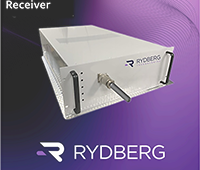Imagine a technology that could allow us to see through opaque surfaces without exposure to harmful x-rays, that could give us the ability to detect harmful chemicals and bio-agents from a safe distance, and that could enable us to peer so deeply into space that scientists could better understand the formation of the universe.
All of these scenarios are possible with terahertz radiation, electromagnetic waves with lengths that fall between microwaves and infrared light. However, the potential of terahertz waves has yet to be reached because they are difficult to generate and manipulate. Current terahertz sources are large, multi-component systems that require complex vacuum electronics, external pump lasers, or cryogenic cooling. It’s an expensive and cumbersome process.
Manijeh Razeghi and her team are the first to produce terahertz radiation in a simplified system, making it easier to harness the power of these elusive waves. They have developed the first room-temperature, compact, continuous terahertz radiation source, and it’s six times more efficient than previous systems.
Razeghi’s research group excels at room-temperature, high-power quantum cascade lasers (QCL), which are compact semiconductor lasers emitting in mid-infrared.
“Continuous terahertz operation at room temperature is of utter importance to the wide application and commercialization of our lasers,” says Razeghi, who is the Walter P. Murphy Professor of Electrical Engineering and Computer Science and director of the Center for Quantum Devices in the McCormick School of Engineering and Applied Science.
The team generated terahertz radiation through nonlinear frequency mixing of two mid-infrared wavelengths at 8.8 microns and 9.8 microns from a single QCL chip. Room temperature, continuous terahertz emission with 3 microwatts is realized in a monolithic nonlinear QCL device with a tiny packaging dimension (as small as 2x5x8 mm3). This is achieved by improving the thermal conductance with epilayer-down bonding and a buried ridge waveguide, as well as by decreasing the optical loss with a buried composite grating for stable, single mode operation.
This discovery will make terahertz radiation more accessible for experiments, potentially leading to advances in biosensing, homeland security, and space research.
Continuous operation of a monolithic semiconductor terahertz source at room temperature
Source: Northwestern University




